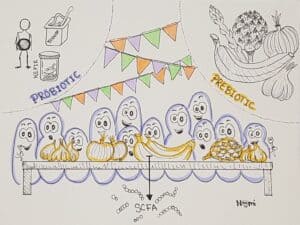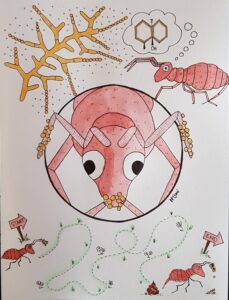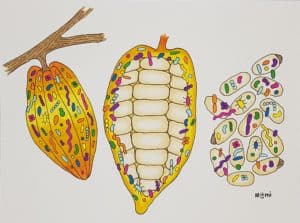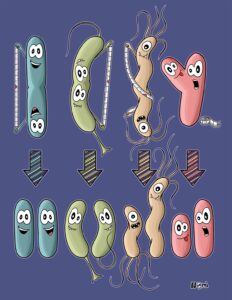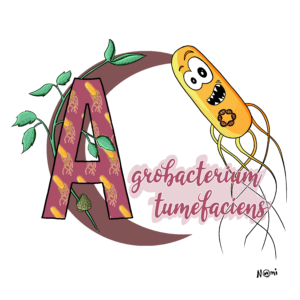I am Kanika (@khannakanika111), a former graduate student with Prof. Kit Pogliano and Prof. Elizabeth Villa at UCSD. During my PhD, I studied tiny molecular machineries that are involved in bacterial sporulation using high-resolution imaging methods in cryo-electron microscopy.
You probably know that many mammals, reptiles and insects hibernate or go on a long sleep to escape the harsh weather and food scarcity. Hibernation habits can differ depending on the animal. But, essentially, hibernation slows down the organism’s metabolism, heartbeat and body temperature to save energy.
Remarkably, even individual cells, like bacteria, have come up with ways to save energy when food is limited. For instance, many bacterial species of Bacillus and Clostridium have evolved a specialized strategy called sporulation to survive starvation.
In this article, I will explain what sporulation is and why and when bacteria decide to sporulate.
What is bacterial sporulation?
When a bacterium sporulates, it transforms from a rod-shaped bacterial cell (4-10 μm long) to a round, spherical spore (1-1.5 μm long).
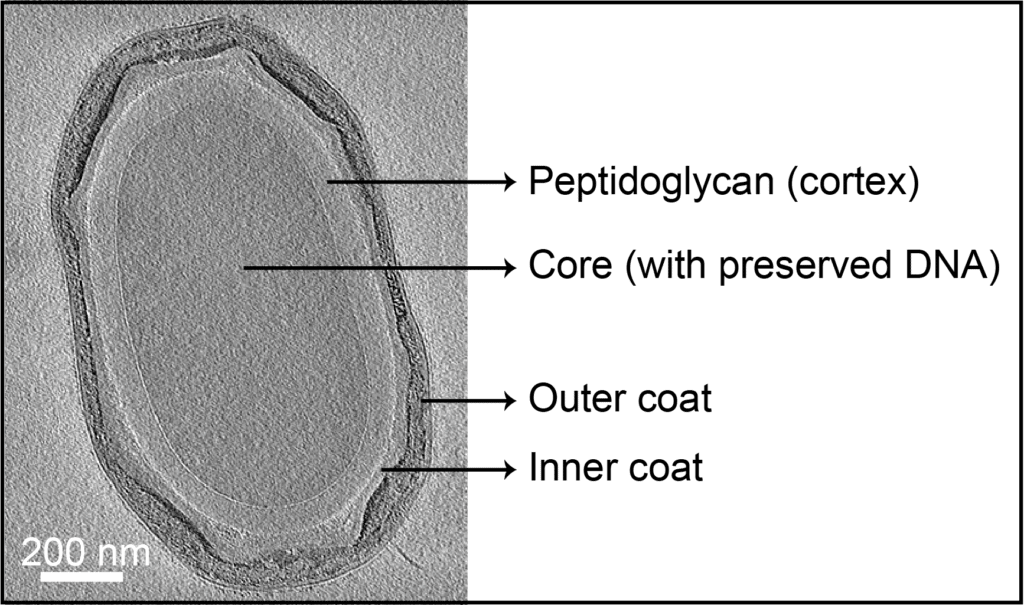
Bacterial spores are surrounded by thick layers of cell wall material or peptidoglycan and many layers of proteins. These make the spore highly resilient and shield it from all kinds of environmental assaults, including UV radiation, desiccation and antibiotics. Within the spore, it protects the genetic material of the parent bacterium.
Now the spore is metabolically dormant. This means that the cell has stopped all activities which require energy, like growth and development.
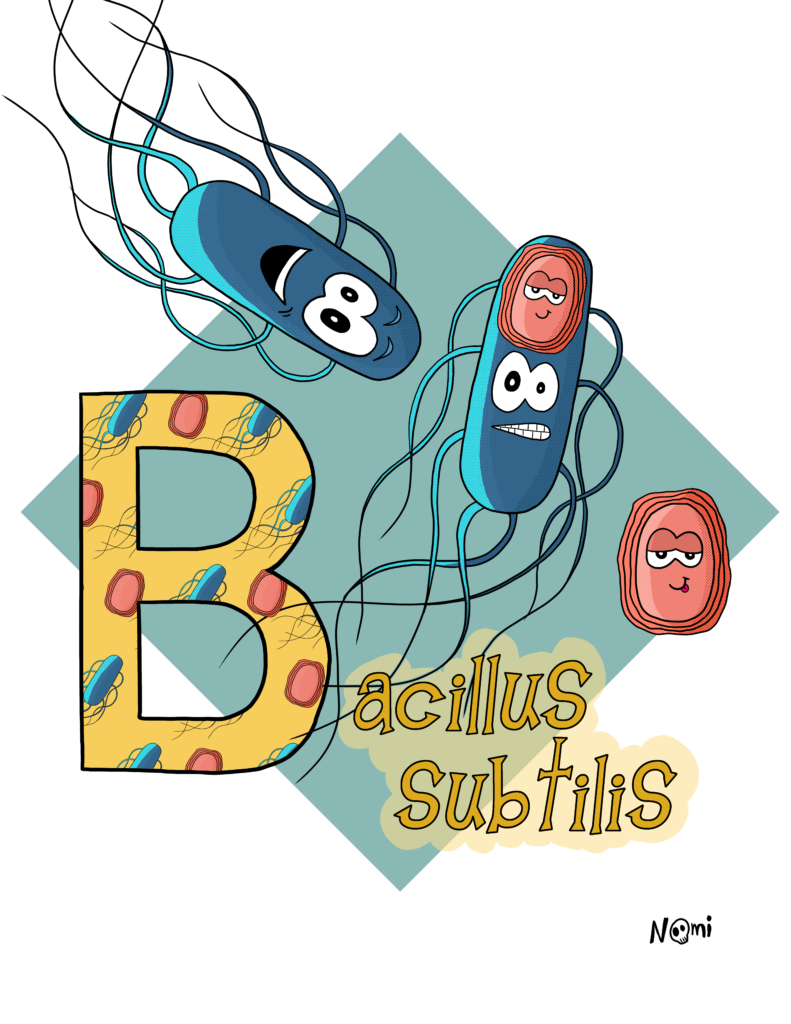
Spores can remain stable for extremely long periods of time. In fact, researchers found Bacillus spores dating back almost 25 million years in the abdomen of extinct bees preserved in Dominican amber. Other samples date back 250 million years from salt crystals.
Why study sporulation?
To date, most studies aim to understand sporulation in the model bacterium Bacillus subtilis. Bacillus subtilis is a Gram-positive bacterium with a thick layer of peptidoglycan outside the cellular membrane.
One of the major reasons why is it relatively easy to study sporulation in Bacillus subtilis is its natural ability to take up foreign DNA and integrate it into its genome. This provides scientists with a wide range of tools for gene editing in Bacillus subtilis. And they can study the functions of different molecules in space and time during sporulation.
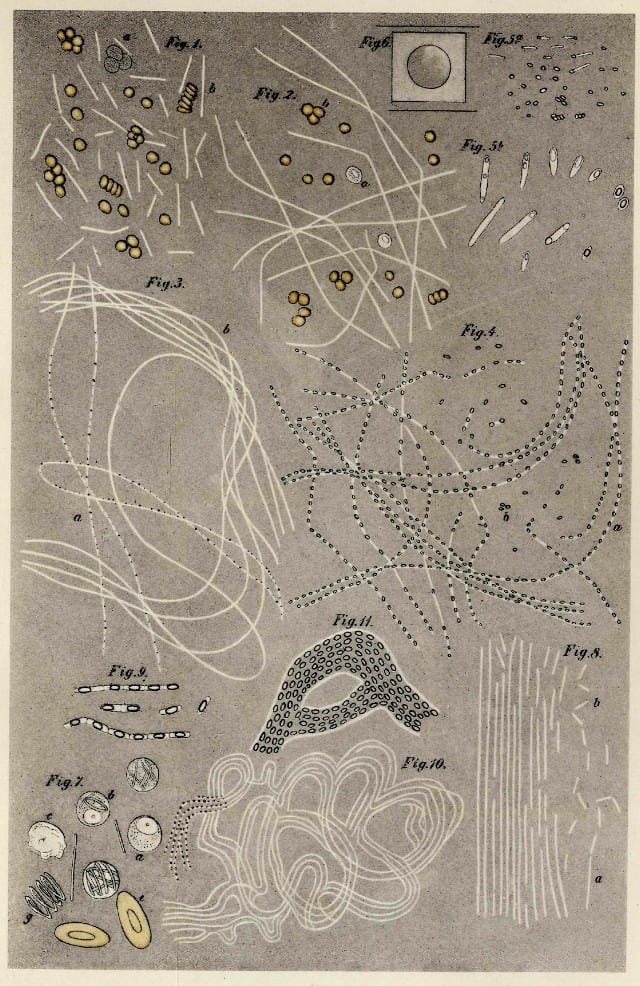
Some bacterial spore-formers can also be pathogenic in a human or animal host.
Examples include Bacillus anthracis (the causative agent of anthrax), Clostridium difficile (implicated in colon disease) and Clostridiumm botulinum (implicated in food poisoning). Spores of these pathogenic bacteria can secretly survive inside the host due to their ability to withstand harsh environments. But once they get access to nutrients, they germinate again and become viable bacteria. These bacteria can then release lethal toxins to cause diseases in their respective hosts.
For example, spores of Bacillus anthracis, the causative agent for anthrax were distributed in the mail via United States Postal Service (USPS) in 2001. The use of Bacillus anthracis as a weapon in the bioterror attack resulted in the death of 5 out of 22 infected people.
There is some good news for the food lovers too though! Spores of a strain of Bacillus subtilis, Bacillus subtilis (natto) are used to ferment soybeans in a traditional Japanese dish called natto. The critical process in natto preparation is the germination of spores which then use nutrients from the soybeans to ferment them. The dish with its powerful smell and flavor is definitely for the bold!
How does sporulation work?
Normally, a bacterial cell divides in the middle to produce two identical daughter cells. Researchers call this process binary fission or vegetative growth.
But when a bacterium sporulates, the cell divides closer to one end of the cell, near a pole. This leads to the formation of two daughter cells of different sizes. The smaller cell is the forespore and the larger cell is the mother cell.
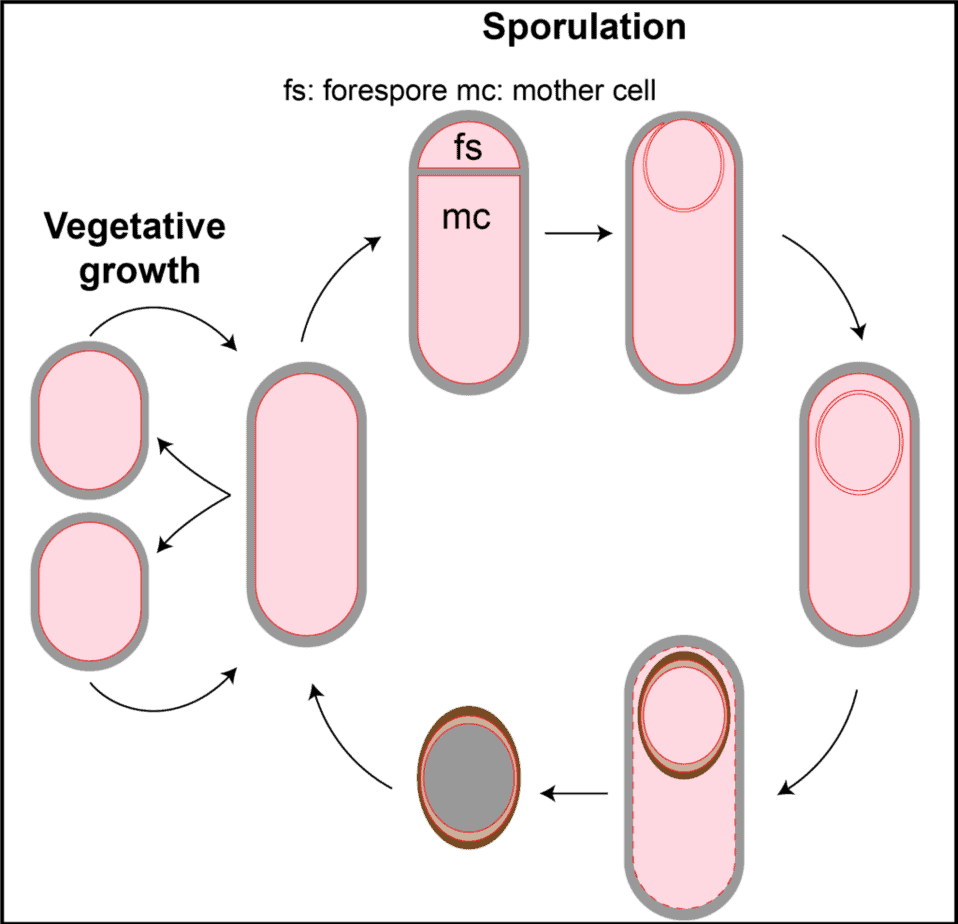
The two cells are separated by a wall made by the invagination of the cell membrane and the peptidoglycan. This wall is the septum.
Cell division leads to separation between spore and mother cell
Surprisingly, the wall separating the two daughter cells is almost four times thinner during sporulation than during vegetative growth (~22 nm vs ~80 nm).
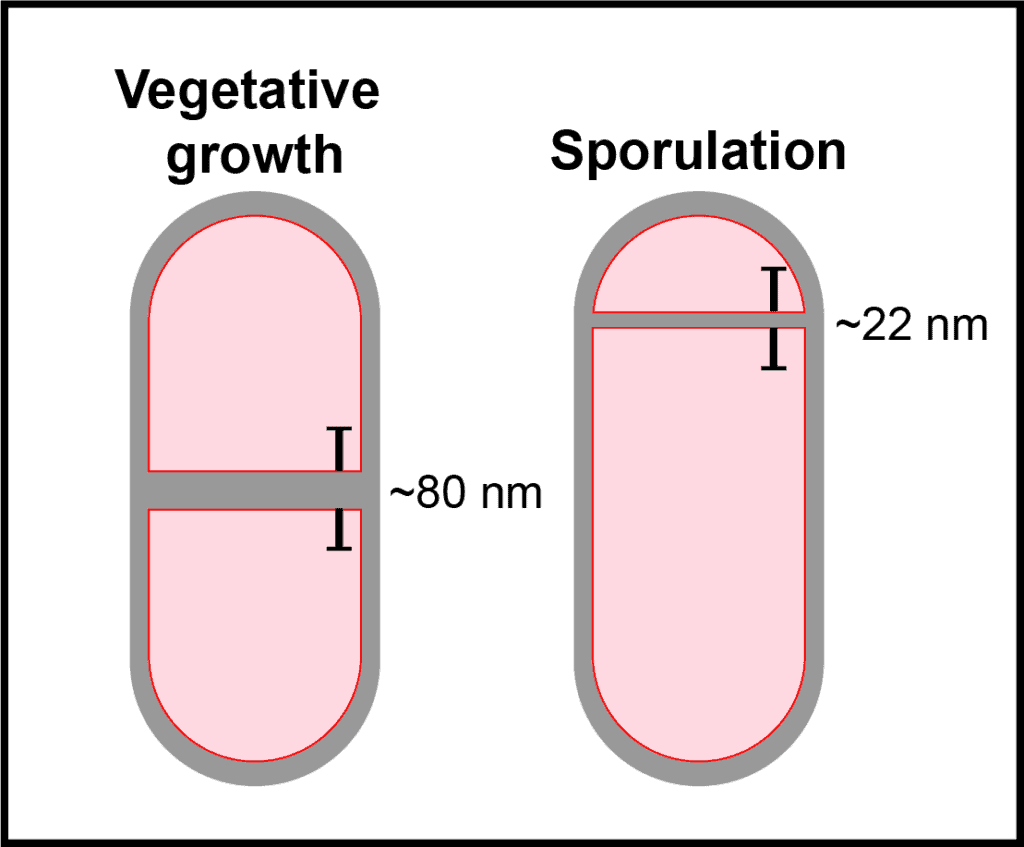
Scientists have always wondered why the cell would need a thinner septum during sporulation. One reason can be that the forespore and the mother cell need to communicate with each other and exchange certain metabolites. A thinner septum can make this a lot easier because channels don’t have to go through a thick wall.
Another reason could be that the thinner septum is likely more flexible and easier to bend and stretch. Hence, the mother cell can move forward to engulf the forespore so that it is completely inside the mother cell.
Transporting DNA into the spore
When a bacterial cell divides vegetatively, it splits the bacterial DNA equally into two daughter cells. But an interesting phenomenon occurs during sporulation.
The DNA is trapped at the septum such that the forespore has only 1/3rd of the DNA and the remaining 2/3rd stays in the mother cell. A transporter then pumps the rest of the DNA from the mother cell to the forespore.
Packing the whole DNA into the small volume of the forespore probably increases the turgor pressure in the forespore. Hence, the forespore inflates like air in a balloon to give it an ovoid shape.
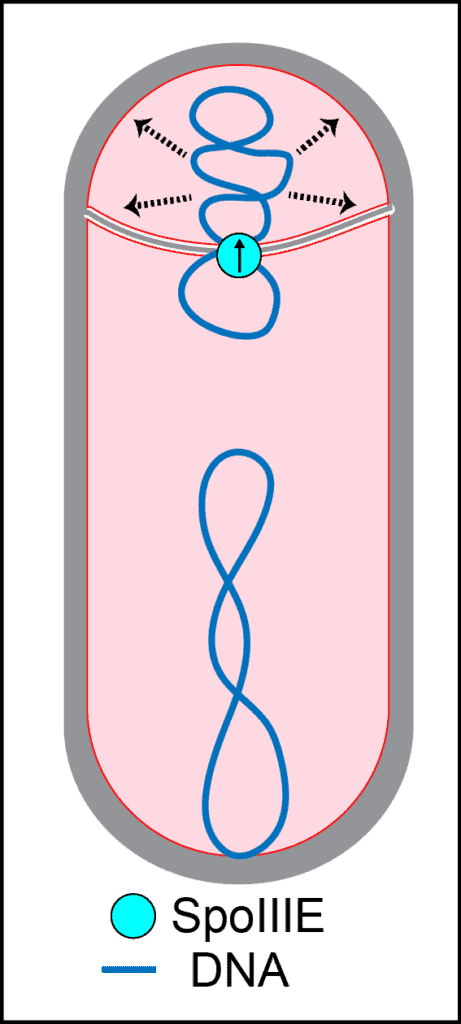
Bringing the spore inside the mother cell
A critical process during endospore formation is when the mother cell engulfs the forespore. This means that instead of lying side by side, the forespore is now within the mother cell.
To engulf the forespore, the mother cell has to overcome two barriers:
(1) the peptidoglycan that surrounds the bacterial cell on the outside (shown by blue circles in the figure below), and
(2) the septum (also peptidoglycan) that separates the two cells (shown by green circles in the figure below).

But the septum and the bacterial cell envelope are also connected. At this so-called leading-edge the two peptidoglycan structures meet. Here, critical activity happens.
First, enzymes within the forespore (denoted by ‘1’ in the figure) make a new bond with the cell wall ahead of the leading edge. With a new bond between the two, the old bond is no longer needed. Thus, enzymes in the mother cell break this old bond (denoted by ‘2’ in the figure).
Like this, the mother cell can slowly move around the spore until it completed warps around it.
Wrapping the spore in a thick coat
Once the mother cell engulfed the forespore completely, the spore needs to mature. For this, the mother cell builds thick and protective layers around the spore to protect it from the environment.
Ultimately, the mother cell lyses and dies and releases the mature spore into the environment. Only when the environmental conditions become favourable again, spores germinate and normal vegetative growth cycle starts again.
Bacterial sporulation – a tightly regulated process
Although the process of sporulation sounds pretty simple, it can be extremely challenging to comprehend from the point of view of the bacterial cellular machinery. More than 500 genes are active only during sporulation. And these are not active during vegetative growth.
Also, some genes are only active in the mother cell and others only active in the forespore. And each stage of spore formation needs to be tightly regulated!
The studies of spore formation in Bacillus subtilis have undoubtedly increased our appreciation of what else bacteria are capable of.
However, there are still many unanswered questions and unknown genes during sporulation that we need to study.
Also, we need to expand these studies to understand sporulation in pathogenic spore-formers like Clostridium difficile and Bacillus anthracis so that we can develop treatments for these disease-causing organisms!
Recent sequencing analysis of the human gut microbiota also indicate that around 50-60% of bacteria in a healthy host intestine are spore-formers. But we still don’t understand the functional and physiological relevance of the majority of them.
There is definitely lots to explore and understand about this one-of-a-kind process of sporulation in bacteria!



